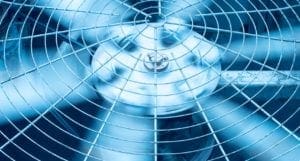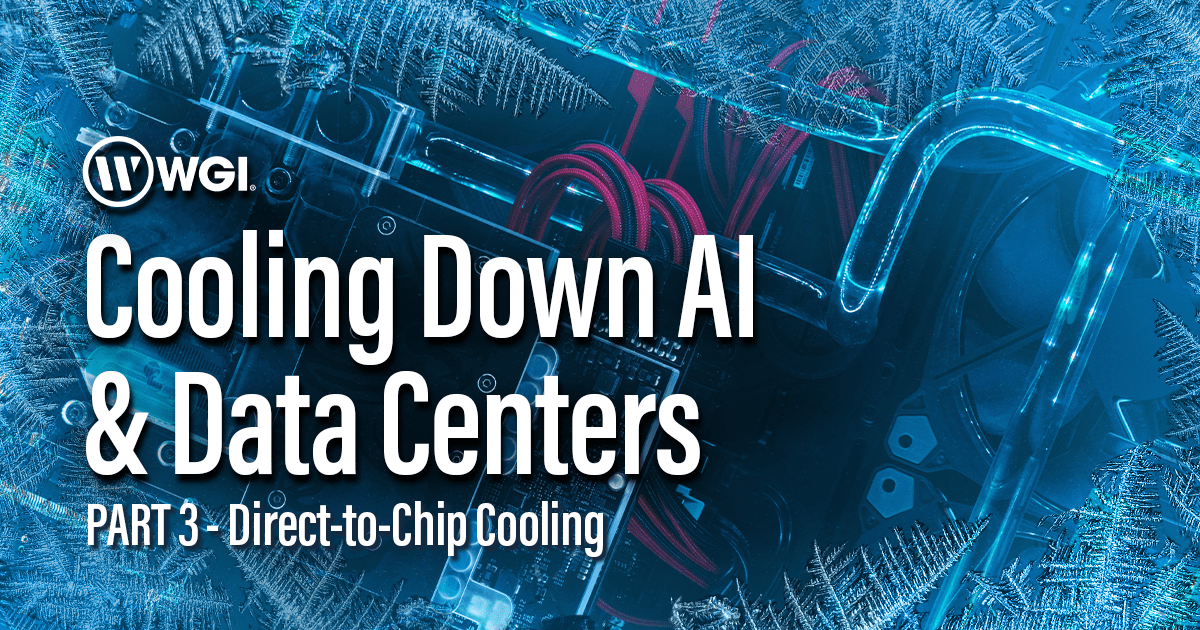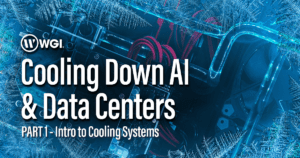
HVAC In The Post COVID-19 World
Discover how building owners and developers can leverage a better HVAC system as a competitive advantage in the post-COVID 19 world.
Learn from award-winning professionals — explore our whitepapers, blogs, and the latest industry updates.
Join our dynamic organization of engineers, land surveyors, landscape architects, environmental scientists, and architects!
Talk to a market leader today! We’ll answer any questions you have about our professional services.

With the introduction of groundbreaking technologies such as the NVIDIA H100 Tensor Core GPU, 2024 is set to become a landmark year for AI and computing advancements. However, the immense power generated by these GPUs presents significant cooling challenges… This is where Direct-to-Chip (D2C) Cooling comes into play. This innovative, waterless technology balances performance and sustainability, paving the way for the future of AI.
Direct-to-chip cold plate cooling involves circulating a cool liquid through a plate that is in direct contact with major heat sources such as the CPU. Due to the advent of increasingly powerful GPUs, this method has evolved from a luxury to a necessity for high-density clusters in advanced data centers, edge computing, and federal applications.
Direct-to-chip (D2C) liquid cooling is evolving from a perceived luxury to an indispensable requirement for fueling high-density clusters in higher-end data centers, edge computing, and federal applications. 
D2C liquid cooling targets the hottest components within servers. Despite its high cost and the potential risks associated with cooling system failures, it effectively manages heat by circulating liquid to the most heat-intensive components within IT equipment.
Direct-to-chip cooling dissipates heat more rapidly and consumes less energy compared to traditional cooling methods, such as air-cooled server racks.
Targets specific heat sources:
Our MEP experts at WGI remain dedicated to delivering cutting-edge solutions that optimize performance and efficiency in data centers. Leveraging the latest advancements in cooling technologies, we provide sustainable, reliable, and cost-effective results tailored to meet your specific needs.
As we conclude our “Cooling Down AI & Data Centers” series, we invite you to explore our previous installments to gain a comprehensive understanding of the next-generation solutions that are now available.
Innovate with confidence – Contact us today and explore how our services can elevate your next project!

WGI is a national design and professional services firm leading in technology-based solutions for the construction of public infrastructure and real estate development. At WGI, we’re providing Tomorrow’s Infrastructure Solutions Today.

Discover how building owners and developers can leverage a better HVAC system as a competitive advantage in the post-COVID 19 world.

WGI’s experts from multiple divisions share their thoughts and predictions in terms of what we can expect to see in our industry in 2022 and beyond.

Nick will support WGI in the development and implementation of technology-enabled strategies for innovation, sustainability, growth, and leverage opportunities for digital transformation.

In the age of AI, effective HVAC cooling is crucial for data centers. In part 1 of our 3 part series on Cooling Down AI & Data Centers, we explore traditional and advanced cooling methods, emphasizing the need for expert consultation to choose the best system for specific needs.

We’re refreshing our brand to reflect the energy, inspiration, and excitement that we feel when we come to work every day.

WGI was ranked in the top 200 for the tenth consecutive year by Engineering News-Record (ENR) on their Top 500 Design Firms List for 2024.
You’ve been searching for a place like WGI. We look forward to meeting you soon.
Sign up to receive emails to hear our latest news and achievements in our monthly newsletter.
Enter your zip code, and we’ll personalize your experience with local projects, office locations, team members, and more.
WGI supports its associates with meaningful opportunities for growth, strong benefits and perks, while we work collaboratively with clients and co-consultants to shape and improve communities.






WGI is a dynamic organization with opportunities nationwide for engineers, land surveyors, landscape architects, environmental scientists, and architects.